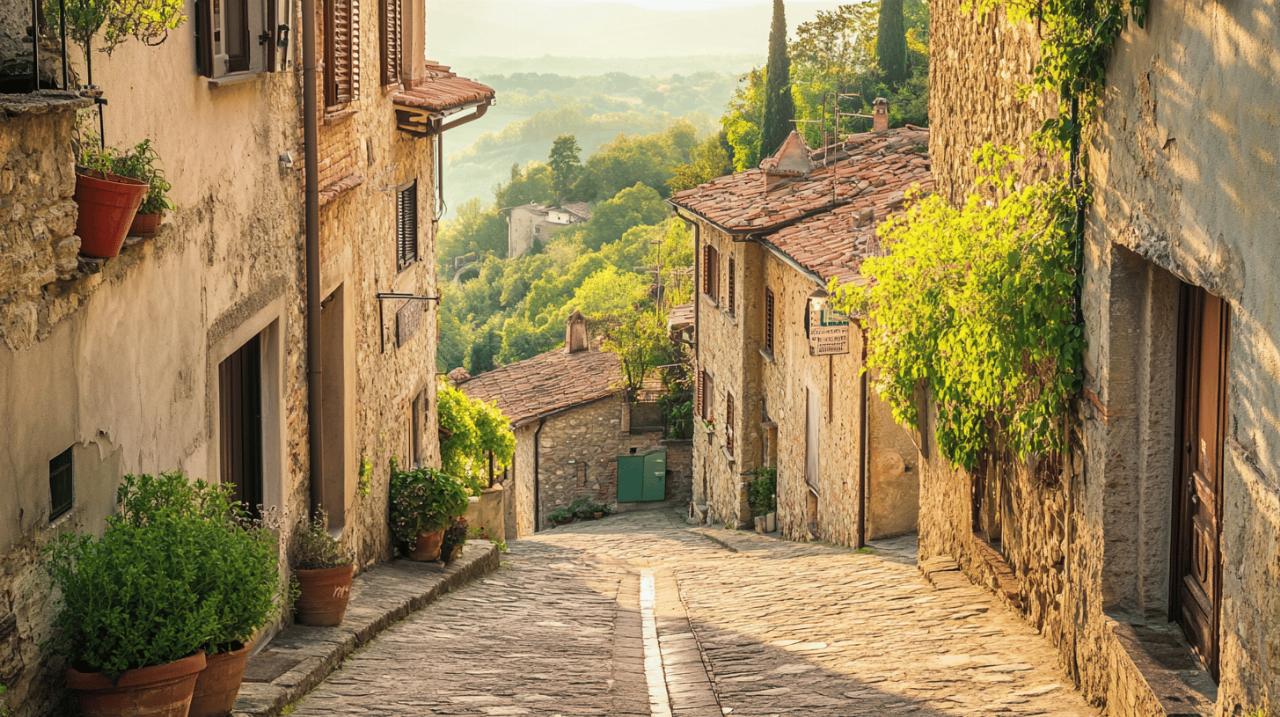Dreaming of an Italian getaway without breaking the bank? The one euro housing scheme in Italy has captured the imagination of property enthusiasts worldwide. This initiative offers a unique opportunity to purchase a slice of Italian heritage for the symbolic price of just one euro. However, before you start packing your bags for la dolce vita, there's much more to understand about these seemingly too-good-to-be-true property deals.
Understanding the one euro housing scheme
The 'houses at 1 euro' project began in Italy in 2017 as an innovative solution to a growing national problem. Many small Italian towns have been experiencing severe population decline as younger generations move to cities for better employment opportunities. This exodus has left numerous historic buildings empty and falling into disrepair. Domus agency and other property specialists have noted that this demographic shift has dramatically affected the character and economy of these once-vibrant communities.
Why Italian towns are selling homes for one euro
The driving force behind these extraordinarily affordable property offerings is not profit but preservation. Local municipalities face the challenge of maintaining their architectural heritage while dealing with shrinking tax bases and limited resources. Rather than allowing beautiful historic buildings to crumble, town councils have devised this creative approach to transfer ownership to those willing to invest in restoration.
The goals behind these property initiatives
These schemes aim to breathe new life into abandoned villages by attracting new homeowners who will contribute to the local economy. The ultimate objective extends beyond simple property transactions to revitalising entire communities. By bringing in new residents, whether permanent or seasonal, these towns hope to stimulate local businesses, create renovation-related employment, and preserve their cultural identity for future generations.
Renovation requirements and commitments
The symbolic price tag comes with significant strings attached. When you purchase a one euro house, you are essentially entering into a contract with the municipality to restore the property within a specified timeframe.
What to expect from a one euro property's condition
Most one euro properties are in various states of disrepair. These are not move-in ready homes but rather projects requiring substantial work. Many have been abandoned for decades and may have structural issues, damaged roofs, outdated or non-existent utilities, and general deterioration. Viewing properties in person is absolutely essential to understand what you might be taking on. Photos can be misleading, and the reality of these historic buildings often requires a keen eye to see both their potential and their problems.
Time constraints and renovation obligations
Buyers must typically submit renovation plans within 2-12 months of purchase. Construction work needs to begin within a year and be completed within a specified period, usually three years. This timeline varies between municipalities, with some requiring completion within just 365 days after obtaining necessary permits. Failing to meet these deadlines can result in financial penalties or even forfeiture of the property back to the town. The renovation must also comply with local building codes and preserve the historical character of the structure.
Financial considerations beyond the euro price tag
While the purchase price may be nominal, the actual investment required is substantial. Prospective buyers should be prepared for significant additional costs that make these properties far from free.
Deposits and surety guarantees explained
Most schemes require a guarantee deposit that serves as insurance for the municipality that you will complete the promised renovations. This surety can range from €1,000 to €10,000 depending on the location. For example, in Mussomeli, buyers must provide approximately £5,000 as a guarantee. This amount is typically refundable once renovation obligations are fulfilled, but will be forfeited if the work is not completed within the specified timeframe.
Hidden costs and additional expenses to budget for
Beyond the deposit, buyers face numerous other expenses. Legal and notary fees for property transfer typically amount to around €3,000. Renovation costs vary dramatically based on the property's condition and your ambitions, but commonly range from €20,000 to €50,000 for basic restoration. For larger properties, such as the former monastery outside Bologna that was part of this scheme, renovation costs could soar to €1.5 million. Buyers also need an Italian tax code, which can be obtained through the Italian Revenue Agency or a consular office.
Regional variations in one euro schemes
 The implementation of one euro housing programmes is not standardised across Italy, with significant differences between municipalities.
The implementation of one euro housing programmes is not standardised across Italy, with significant differences between municipalities.
How programmes differ across Italian municipalities
Each town establishes its own specific rules, requirements, and priorities for their one euro housing initiative. Some municipalities primarily want to boost tourism and may require that properties be used as holiday accommodations or businesses. Others are more focused on attracting permanent residents to revitalise their communities. The application processes also vary widely, from simple expressions of interest to formal written applications with detailed renovation plans.
Researching specific town requirements before purchase
Due to these variations, thorough research into the specific requirements of your target location is essential. Several regions across Italy have participating towns, including Emilia-Romagna, Abruzzo, Campania, Sicily, Piedmont, Le Marche, Liguria, Puglia, Sardinia, and Tuscany. Specialised websites such as 1eurohouses.com, case1euro.it, and property-in-sicily.estate offer listings of available properties and can provide initial information about local requirements.
Location realities of one euro properties
The geographical distribution of these properties reflects the demographic challenges facing rural Italy.
Geographical distribution across rural Italy
One euro homes are predominantly located in less sought-after, often remote areas of Italy. The scheme originated in Sicily in 2008 and has since spread throughout the country, particularly to interior regions facing population decline. These properties are rarely found in major cities or popular tourist destinations where real estate remains valuable. Instead, they tend to be concentrated in small inland towns and villages that have experienced significant outmigration.
Accessibility and local amenities considerations
The remote nature of many one euro properties presents practical challenges regarding accessibility and available services. Prospective buyers should carefully evaluate the distance to essential amenities like hospitals, supermarkets, and transportation hubs. Some villages may have limited public transport connections, making car ownership necessary. Internet connectivity and other utilities might also be less reliable than in urban centres. The charm of rural Italian life comes with trade-offs in convenience that might not suit everyone.
Success stories and cautionary tales
The one euro housing scheme has produced both remarkable transformations and sobering lessons.
Profiles of buyers who have completed renovations
Many buyers have successfully transformed dilapidated properties into beautiful homes. Some have created holiday retreats that they visit several times a year, while others have established permanent residences or profitable businesses. The Italian government's 'superbonus' scheme, which has covered up to 110% of qualifying energy-efficient building expenses, has helped make some renovations more financially viable. These success stories often share common elements: careful planning, realistic budgeting, and a genuine appreciation for the slow pace and cultural richness of rural Italian life.
Common pitfalls and challenges to avoid
The path to renovation success is strewn with potential obstacles. Many buyers underestimate the true costs involved or the complexity of navigating Italian bureaucracy. Non-EU residents, including British citizens post-Brexit, face restrictions on the amount of time they can stay in Italy each year without obtaining residency. For those hoping to visit their property regularly, this can become a significant limitation. Additionally, popular properties may trigger bidding wars that drive prices well above the advertised one euro, sometimes reaching €5,000 or even €20,000. Thorough due diligence and professional guidance are essential to avoiding these and other common pitfalls.







